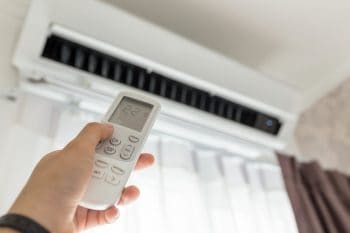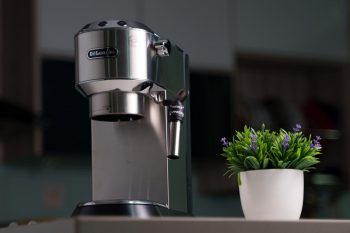
Winterizing your air conditioner is an important step in maintaining its longevity and performance. While modern air conditioning units are designed to withstand harsh weather conditions, certain steps can be taken to safeguard them against potential winter damage. This comprehensive guide will discuss how to wrap an air conditioner for winter, the benefits of doing so, common mistakes to avoid, and recommended air conditioner covers.
To wrap an air conditioner for winter, start by cleaning the unit and turning off the power. Use a breathable cover or plywood to protect the top of the unit from snow and icicles. Insulate any exposed pipes and check the unit periodically throughout the winter. Avoid using plastic or non-breathable materials, full-length covers, or completely sealing the unit. Also, be cautious about creating a hiding spot for rodents or pests.
Why Wrap an Air Conditioner for Winter?
Protecting your air conditioner during winter can help prevent potential damage caused by falling icicles, heavy snowfall, and debris like leaves and sticks. Here’s why it’s essential:
- Prevents Snow and Ice Damage: A cover can protect the unit from heavy snowfall and ice, which can cause operational issues and frequent breakdowns.
- Keeps Debris Out: Covering the unit can prevent debris from accumulating in the case, affecting the unit’s performance and leading to damage.
- Prevents Ice Formation on Condenser Coils: A cover can stop ice from forming on the condenser coils, preventing potential damage to the unit.
- Protects Against Falling Icicles: If icicles form above the unit, a cover or a piece of wood can shield the unit from damage if they fall.
Materials Needed for Wrapping an Air Conditioner
To properly wrap an air conditioner for winter, you’ll need:
- Breathable Material: A cover made of breathable material like woven polyester or PVC can prevent moisture buildup and rust. Avoid using plastic covers, as they can trap moisture and cause rust.
- Plywood: A piece of plywood can protect the unit from falling icicles and snow. Weigh the plywood down with bricks or rocks to keep it in place.
- Foam Insulation Material (Optional): If you have a window air conditioner, you can insulate the unit using flexible foam insulation material to prevent air leaks. You can also use plastic window film covers or fabric indoor covers to keep the cold air at bay.
Step-by-Step Instructions
- Clean the unit: Remove any leaves, dirt, or debris that may have accumulated around the unit during the summer and fall months.
- Turn off the power: Shut down the power to the unit to prevent accidental activation during the winter months.
- Cover the top: Place a piece of plywood or a breathable cover on top of the unit to protect it from falling icicles and snow. Make sure the cover is not airtight or made of plastic, as this can trap moisture and cause rust or mold.
- Insulate exposed pipes: Wrap any exposed pipes with insulation to protect them from freezing temperatures.
- Check the unit periodically: Inspect the unit throughout the winter to ensure the cover is still in place and to remove any debris that may have accumulated.
Common Mistakes to Avoid
When wrapping an air conditioner for winter, avoid these common mistakes:
- Using a Full-Length Cover: Full-length covers can trap moisture and cause mold, rust, and corrosion. Instead, consider using a specialized AC cover approved by the manufacturer that allows for proper airflow.
- Using Plastic or Non-Breathable Materials: Wrapping your air conditioner in plastic or other non-breathable materials can trap moisture and condensation, leading to mold growth and corrosion. Avoid using plastic covers or tarps.
- Completely Sealing the Unit: Even when wrapped tightly, your air conditioner isn’t airtight, and moisture can get trapped inside, causing rust and corrosion. It’s essential to allow for proper airflow and ventilation.
- Attracting Rodents and Pests: Covering an air conditioner can encourage rodents and other pests to take up residence inside the unit. To prevent this, use a cover that allows for airflow and doesn’t create a cozy hiding spot for critters.
Recommended Air Conditioner Covers
For indoor air conditioner covers, consider:
- Joiish Air Conditioner Cover With Waterproof Top
- Brivic Indoor Air Conditioner Cover for Window Unit
- Jeacent Indoor Air Conditioner Cover
- Homydom AC Cover Indoor
- Luxiv Indoor Air Conditioner Cover
For outdoor air conditioner covers, consider:
- SugarHouse Outdoor Air Conditioning Cover
- BOLTLINK Air Conditioning Cover
- Heavy Duty Winter Top for Outside Air Conditioner Units
- Bestalent AC Cover
- Aozzy Air Conditioner Covers
- COSFLY Air Conditioner Cover
Remember to measure your air conditioner unit and choose the appropriate size cover for the best fit and protection.
Safety Precautions
When using an air conditioner cover, keep these safety precautions in mind:
- Choose the Right Material: Opt for breathable and porous fabric, such as mesh, which allows air circulation and prevents moisture buildup.
- Ensure Proper Airflow: Maintain adequate airflow around your air conditioner unit. Use a cover with plenty of ventilation, and ensure there is a gap of 3 to 6 inches on all sides of the unit.
- Avoid Trapping Heat or Moisture: Do not use a cover that traps heat or moisture, as this can create a breeding ground for mold and attract rodents seeking shelter during the winter.
- Remove the Cover Before Use: Never run your air conditioner with the cover on, as this can restrict airflow and cause damage to the unit.
Remember, modern air conditioners are designed to withstand outdoor environments and don’t necessarily require coverage during winter. Regular maintenance, such as cleaning filters, coils, and fins, and scheduling professional inspections, is equally important for the air conditioner’s optimal performance and longevity.
Frequently Asked Questions
Should I cover my air conditioner during other seasons?
Generally, it’s not necessary to cover your air conditioner during other seasons, especially in the summer when it’s in use. However, if you live in an area with high winds or frequent hailstorms, you might consider using a cover to protect the unit.
Do I need to uninstall my window air conditioner for winter?
While it’s not strictly necessary to uninstall your window air conditioner during winter, doing so can help preserve its lifespan and improve your home’s energy efficiency. If uninstalling isn’t an option, be sure to properly insulate and cover the unit to protect it from winter weather and prevent drafts.
How often should I check my air conditioner during winter?
It’s recommended to check your air conditioner at least once a month during winter. Look for any signs of damage, ensure the cover is still properly in place, and remove any accumulated snow or debris.
Can I use my air conditioner as a heater during winter?
Some modern air conditioners come with a “reverse cycle” or “heat pump” feature, allowing them to function as heaters during winter. However, if your unit doesn’t have this feature, it’s not recommended to use it as a heater.
Can I cover my air conditioner with a tarp?
While a tarp can protect your air conditioner from snow and debris, it can also trap moisture and restrict airflow, leading to issues like rust or mold. It’s better to use a cover designed specifically for air conditioners, which are typically made of breathable materials and designed to allow for proper ventilation.












